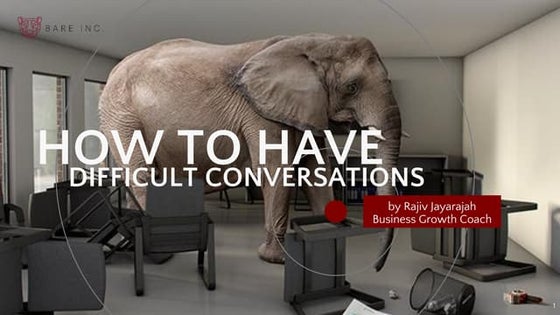Is a Change as good as a rest?
- 1. Is a Change as Good as a Rest? Stress recovery in part-time military service Patrick Horsman & Dr. E. Kevin Kelloway EAOHP 2012
- 2. Meet Mike ŌĆóWorks full-time as a computer programmer ŌĆóHas a Wife and 2 children ŌĆóWorks 45 Hours a week
- 3. Ą■│▄│┘ŌĆ”.. ŌĆóHe is also one of 25,000 Canadians who is employed part-time as a Reserve Military Member. ŌĆó+ ~10 hrs/wk ŌĆóCan this be good?
- 4. Today ŌĆó Can we recover while we work? ŌĆōIf yes, what does it look like for the individual? ŌĆó Outline ŌĆōTheory ŌĆōMethod ŌĆōResults ŌĆōImplications
- 5. Hours at Work ŌĆóBelief that it is detrimental to well- being (Ettner & Grzywacz, 2001) ŌĆóLonger working hours ’āĀ ŌĆōstress (Park, Kim, Chung & Hispana, 2001) ŌĆōaccidents (Trimpop, Kirkaldy, Anthensau & Cooper, 2000) ŌĆōlifestyle behaviors (Sparks, Cooper, Fried & Shirom, 1997) ŌĆóCan be a function of social identity (Ng & Feldman, 2008)
- 6. Theory ŌĆó Conservation of Resources Theory (Hobfoll, 2001) ŌĆōMotivated to obtain and protect resource ŌĆōWill invest resources to gain resources ŌĆó Job Demands-Resources Theory (Bakker & Demerouti, 2007) ŌĆōReserve Employment = + Stressors & + Resources ŌĆó Prolonged Reserve Service can be respite! (Etzion, Eden, Lapidot, 1998)
- 7. Recovery Theory (Sonnetag & Fritz, 2007) ŌĆó Recovery is an effort to restore internal resources. ŌĆó Activity doesnŌĆÖt matter; Process engaged e.g. ŌĆó Psychological Detachment ŌĆó Relaxtion ŌĆó Mastery Experiences ŌĆó Control ŌĆó Social Affiliation (Stevens & Day, 2011)
- 8. Method ŌĆóCross Sectional Survey ŌĆōWithin Person Across Job ŌĆóMailed out Packages with support of the military ŌĆóPackages returned to units and mailed back
- 9. Survey Contents ŌĆó Unique to each job: ŌĆō Interpersonal Conflict at Work Scale (Spector & Jex, 1998) ŌĆō Single-item Job Satisfaction (Wanous, Reichers, & Hudy, 1997) ŌĆō Turnover Intent (Kelloway & Barling, 1994) ŌĆó Global Measures ŌĆō PANAS Negative Items (Watson, Clark, & Tellegan, 1988) ŌĆō Need for Recovery Scale (Sluiter, Van der Beek, & Frings-Dresen, 1999) ŌĆō GHQ-12 (Penninkilampi-Kerola, Miettunen, & Ebeling 2006) ŌĆó On the Job Recovery Experiences ŌĆō (adapted from Sonnentag & Fritz, 2007; Stevens & Day, 2011)
- 10. Participants ŌĆó 331 Army Reservists from Atlantic & Ontario ŌĆō Employed full-time as civilians/part-time army ŌĆó 24 different units, 25 military occupations ŌĆō Infantryman, Artilleryman, Infantry Officer most freq. ŌĆó Age: Range: 16-60, mode: 26-35 ŌĆó 80% Male ŌĆó Civilian Tenure: M = 82 months (SD = 92) ŌĆó Military Tenure: M = 127 months (SD = 108)
- 11. Results ŌĆō Structural Model ŌĆó Used SEM to examine the effects of interpersonal conflict and recovery within and across jobs and on the individual. ŌĆó Tested three competing models: ŌĆō Full (Across Jobs) Model ŌĆō Contained (Within Jobs) Model ŌĆō Trimmed (Mediated) Model ŌĆó Final Model Statistics: ŌĆō ╬¦2 (136) = 280.2, P <0.05 ŌĆō CFI = .916, RMSEA = .06, pclose > .05
- 12. Results-Model Tests ORCD ORCR ORCM ORCC ORCS Civilian Turnover .45** .91** .68** .77** .71** Intent (49%) -.64** Conflict x .13* Recovery Civilian Satisfaction .00 (13%) .00 .15* -.34** Negative Affect Civilian Conflict .31** .72** .24** Health .59** .00 .20** Symptoms Need for Recovery Military Conflict (42%) .05 -.40** .84** .23* Strain -.15* Military Satisfaction (35%) Military OTJ Recovery .59** -.15 ** -.34** .70** .54** .77** .69** .44** Military Turnover -.23** Social Control Mastery Relax Detach Intent (33%)
- 13. Results ŌĆō Structural Model Civ Conf x Recovery Civilian .15* Conflict .31** Mental Symptoms .20** Military Conflict -.40** Military Recovery
- 14. Results ŌĆō Interaction 5 4.5 4 Mental Symptoms 3.5 3 Low Recovery 2.5 High Recovery 2 1.5 1 Low Conflict High Conflict
- 15. Discussion ŌĆó You can engage Recovery experiences while working ŌĆōIn the secondary job; a change might be as a good as a rest. ŌĆōThose experiences are a strong predictor of mental health & Interact with conflict in the primary role ŌĆōProbably because of resource gain! ŌĆó Reserve Service Affords opportunities to engage recovery processes
- 16. Limitations & Implications ŌĆó Cross Sectional ŌĆó Very Specific Sample ŌĆó Resource Gain Focus for Recovery ŌĆōRecovery predicts health symptoms ŌĆó Recovery does not have to be leisure ŌĆó Recovery can Moderate the stressor experience
- 17. Questions?
Editor's Notes
- #3: To get started I would like you to meet my good friend Mike who has been so kind as to serve as my example todayMike works 45 hours week as a computer programmer, has a wife and 2 kids and a busy family life
- #4: The thing about Mike is that he is one of many Reserve Military members in Canada. The thing about Reserve service in Canada is that we serve on an ongoing basis ŌĆō an evening or two a week and a weekend a month. Some evenings when he is done work at his Regular job he changes and goes to work for the military. The overwhelming reaction of most parties is that this must be a bad thing
- #5: Today I am going to go against the grain a little show how working two jobs can, in some contexts, be a good thing for my friend Mike and others like him. This research asked the question can we recover while we are working, and if so, what is the effect of on the job recovery on the individual. I will quickly cover some of the theory behind this work, followed by the methods of this project, results and a brief discussion of implications
- #6: We know there does exist a widespread belief that working more hours is bad for you and your health.We also know that longer working hours predicts stress, accidents, and certain lifestyle behaviours such as alcohol use and gamblingThis all seems pretty Grimm.However we also know that working more hours can be the result of social identity not always necessity.Further ŌĆō we donŌĆÖt know about people who change jobs ŌĆō is the effect of time the same if the environment and its characteristics change?
- #7: Conservation of resources theory would dictate that individuals are motivated to obtain and protect resources and will invest resources, such as energy and time, to gain further resources. In this sense we can see how a person might choose to work a second job if it affords them resources. The most obvious that comes to mind are money or other employment benefits, but today we are going to focus on the psychological.Job demands resources theory would suggest that employment is stressful, but also offers a number of inherent resources. In this case the same should be true of both jobs.However, we also know that reserve Service has been previosuly shown to act as a form of Respite from the stressors of full-time employment. Etzion, Eden, and Lapidot found that prolonged periods of service decreased burnout in Reserve members as a function f psychological detachment from the work enviroment.
- #8: Intimately tied to respite is the literature on stress recovery. Many in the audience and at this conference will be very familiar with stress recovery. Recovery works opposite the strain process in an attempt to restore homeostasis, but in this case it is helpful to think of recovery as an effort to restore internal resources or perhaps gain further resources for future use. This is activated by a number of recovery processes. The first four listed here are by now well established thanks to work by Sonnentag, Fritz & colleagues. Psychological detachment from the stressors of work, relaxation which is characterized by low effort and positive mood, mastery experiences and pursuits of learning which build self-efficacy and control over off work time. Hin addition, a component of social affiliation was proposed in early work by meijman and Mulder, and colleagues of mine, one of whom is present here today, have shown support for adding social affiliation as well as many other potential processes.Because the specific activity does not matter, only the recovery process that is engaged, we entereted this study with the theory that working in a part-time job, namely serving as a Reserve soldier, could act as a means of stress recovery that allows the individual to rebuild resources.job may offer individuals the opportunity to forget about their primary employment for awhile, to learn new skills, to relax, be social, and gain a sense of control ŌĆō all of which are the determining features of stress recovery
- #10: The survey instrument itself contained many questions, some of which had to be asked twice, once regarding each job. Unique to each job we included a measure of interpersonal conflict at work as a stressor variable, in ddition to a measure of job satisfaction and turnover intent.The obvious question at this point is why inerpersonal conflict? The answer is because we know interpersonal conflict is a strong predictor of mental health and we also know that interpersonal conflict is thought ot be inherently stressfull for the individual because it undermines individual self-efficacy and makes the individual feel like they do not belong to the group socially. As you will see later, this works quite well with the facets of recovery engaged by reserve service.As three indicators of mental health we used measures of fatigue, negative affect, and psychological strain.Finally, we used a modified version of the Recovery Experiences Questionnaire which included a fifth social component and made it reflect on the job recovery experiences in the Reserve occupation.
- #13: I know, you see this and you are thinking clearly he has too much time on his handsIŌĆÖm a PhD student, what is time?Okay so seems complicated but really is not. We have here civ/military conflict, satisfaction and turnover. Here we have mental health symptoms indicated by the 3 measures previously discussed, and recovery indicated by the five recovery sub-scales. The only new concept in this slide is the interaction term you can see here at the top, which is an interaction between recovery during military employment and conflict experienced during the full time civilian job. This interaction was built using the method recommended by Little, Bovaird, and Widaman (2006) and is completely orthogonalized as you can see from the zero order correlations.The darker bolded paths represent the final trimmed model, and as you can see all the effects are constrained to within job - there is no cross over, well, with one exception
- #14: But what I want to do is zoom in and highlight what I think are the most important parts of this model moving forward
- #15: Graphed using the aiken and west method for continuous variables












































